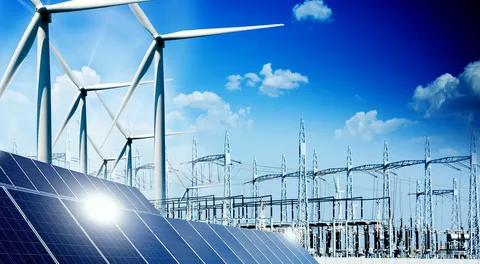The Rise of Renewable Energy ESO
Over the past decade, renewable energy sources like solar and wind power have seen tremendous growth across the globe. The costs of generating electricity from renewable sources have declined significantly, making them more economical compared to traditional fossil fuel generation. Many countries have also announced ambitious targets to increase the share of renewables in their overall energy mix to reduce carbon emissions. However, integrating large amounts of renewable energy brings its own set of technical challenges. Renewable sources like solar and wind are variable and intermittent in nature, which can impact grid stability and reliability.
The Need for Energy Storage
One of the most effective ways to overcome the intermittency issues of renewable energy is through large-scale energy storage systems. Energy ESO helps store excess electricity generated from renewable sources during periods of high production and supply it to the grid later when supply drops. This helps balance the energy demand-supply dynamically. Technologies like pumped hydro, batteries, and hydrogen storage enable grid operators to store bulk amounts of energy and dispatch it as needed. However, developing new large-scale energy storage projects is an expensive proposition requiring massive upfront investments.
Enter Energy Service Company Model
This is where the energy service company (ESO) model comes into play. An ESO takes responsibility for developing, owning, operating, and maintaining a large-scale energy storage asset while the offtaker like a utility pays for the storage services on a pay-per-use basis. The ESO bears all capital and operating costs and earns recurring revenue by selling storage capacity and ancillary grid services to the offtaker over long-term contracts ranging 15-25 years. This removes a significant financial burden from the offtaker while allowing them to leverage versatile storage assets to balance their renewable energy sources.
Benefits of the Energy ESO
The ESO model provides several compelling benefits to all stakeholders:
For Offtakers (Utilities):
– No upfront capital investments required to build storage projects.
– Access to flexible storage capacity to meet demand peaks and balance renewables.
– Pay only for actual services procured on a usage-based payment structure.
For ESOs:
– Attractive long-term contracted revenue streams with high creditworthy offtakers.
– Opportunity to earn additional revenue from ancillary grid services.- Better able to optimize storage assets and maximize value through performance-based payments.
For Consumers:
– Increased reliability of grid supply with higher penetration of renewables.
– Potentially lower energy costs over long run due to deferred or avoided grid upgrades.
For Regulators:
– Facilitates faster scale-up of renewable energy and storage capacity.
– Shifts technology and performance risk to specialized ESOs.
– Helps achieve clean energy goals in a cost-effective manner.
A Win-Win Scenario
Overall, the energy service company model provides a win-win scenario for offtakers, ESOs, consumers, and regulators alike. It leverages private sector expertise and capital to build large renewable energy plus storage projects at scale while transferring performance risk. The Energy ESO earns returns by developing bankable projects and optimizing storage assets. Offtakers obtain clean and reliable capacity without upfront investments. Consumers benefit from lower long term energy costs. Regulators meet clean energy targets faster. As renewable penetration increases globally, the ESO model is emerging as a promising solution to build transmission-scale storage projects in a sustainable manner.
Energy Storage Optimization Technologies
To maximize the value of their storage assets, energy service companies are investing heavily in innovative optimization technologies:
Artificial Intelligence & Machine Learning: Advanced algorithms use historical operating data to predict renewable generation and load patterns more accurately. This helps schedule storage injections/withdrawals optimally for maximum revenue.
Distributed Energy Resource Management Systems: Integrated software platforms aggregate multiple distributed storage, solar, diesel gensets to maintain grid stability at lowest system costs. They dispatch storage based on forecasted locational pricing.
Hybrid Energy Systems: Integrating storage with on-site solar, fuel cells creates hybrid microgrids. Waste heat from fuel cells can power hydrogen electrolyzers to produce fuel for fuel cells. This boosts energy efficiency and resilience.
Blockchain: The technology allows distributed ledger based tracking of energy flows with different market participants. This brings more transparency to wholesale energy markets and facilitates peer-to-peer renewable energy trading.
Such advanced technologies help ESOs integrate storage and distributed resources more intelligently. This delivers greater value-added services to grid operators and offtakers, enhancing the business case for large-scale energy storage solutions over the project lifecycle.
Concluding Thoughts
The emergence of the energy service company model is a pathbreaking development that can accelerate the energy transition globally. By taking on development risks, ESOs will play a catalytic role in scaling up renewable energy plus storage projects vastly. This will facilitate much higher integration of clean resources while maintaining grid reliability. If implemented prudently with right regulatory frameworks, the ESO approach stands to deliver reliable, affordable, and emissions-free energy for consumers. It heralds an era of robust public-private partnership for sustainable infrastructure development.
*Note:
1. Source: Coherent Market Insights, Public sources, Desk research
2. We have leveraged AI tools to mine information and compile it



